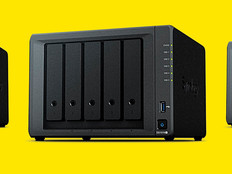How the Pinckney Community Schools System Is Preparing for the Future
Education is often about numbers. Districts must hit budget targets and maintain student-to-teacher ratios, and then there's the ideal ratio of computers to students in the modern K–12 educational facility. This ratio increasingly matters to educators — and to the tech staffs that support students in "one-to-one" environments.
Educators at Pinckney Community Schools (PCS), a southeast Michigan district about an hour outside of Detroit, knew that getting a notebook computer into every student's hands was a vital step toward ensuring a 21st century education. But to get there, they knew they also needed a 21st century technology infrastructure.
When voters in Livingston County approved a $60 million bond initiative in February 2010, enabling Pinckney Community Schools to upgrade its schools, PCS received the green light to implement a one-to-one initiative in its middle and high schools.
The team at PCS had its work cut out for it. The IT staff, though very hands-on, included just three technicians to support more than 3,000 computers. Plus, the district had to get the bulk of the network overhaul done by the time Pinckney schools reopened the following September.
"When the bond passed in the middle of the school year, we knew we had to hit the ground running," says Tom McCurdy, PCS' assistant superintendent for instruction, assessment and technology. "The last thing you want is for the community to pass a big bond issue and then make them wait five years before anything changes. Technology was a big selling point for that bond; the community clearly supported its kids using technology."
Rip and Replace
The first order of business? Move from the district's 1990s-era phone system to a Voice over IP (VoIP) solution and replace PCS' slow consumer-grade wireless network with a dedicated, high-speed wireless architecture built on Cisco Systems technology.
"If one-to-one computing was going to work, we needed to have the wireless infrastructure in place," McCurdy says. "We knew students would be consuming a lot of video and other content, so early on we said the network had to be robust enough to move 10 megabits of data for every kid in a class of 30."
10 Mbps The rate of data throughput Pinckney Community Schools' IT team allotted for each student in a class of 30 when it developed the district's wireless network strategy
The district purchased 380 Cisco Unified IP phones, 356 access points and 150 switches, says Rich McLean, a senior CDW account manager.
At the core of the revitalized network, a Cisco Catalyst 6509 Ethernet switch delivers IP telephony and data; Catalyst 4900M Series switches create a wired backbone that supports data throughput of 10 gigabits per second to every building; and a Cisco 5500 Series wireless controller broadcasts data to hundreds of Aironet 1140 Series access points. Also in the mix are 2,100 notebook computers — one for every student in sixth through 12th grade.
Ted Kidd, supervisor of technology support for PCS, said the one-to-one initiative was the key driver behind all of the district's infrastructure improvements.
"We knew we'd need more servers to support all those new machines, and thus more server and client connections," he says. "We said, 'Let's get more speed so we can make sure all the existing network components can support everything new we've got coming in.' So now we've got 10 gigs between our main server room and all the buildings, and 1-gig wired connections inside each building. We needed that 10-gigabit backbone to make sure all our 1-gig connections can communicate at full speed."
One of the reasons the district chose Cisco gear was so that it could have a single vendor that would supply everything the district needed — and, adds McCurdy, a single neck to wring if the going got tough.
"We were throwing three complex projects together at the same time, and the last thing we wanted to do was have to sit down with Vendor X and listen to them complain about Vendor Y," McCurdy says. "We were looking for a comprehensive solution, including a network backbone, switches supporting Power over Ethernet, IP telephony and a robust wireless solution. Cisco had all of those, as well as excellent support. We've used them for more than a decade and have had a lot of success."
Because CDW had been supplying the district with nearly all of its technology gear and services for more than 10 years, adds McCurdy, partnering with CDW to deliver the Cisco solutions made sense.
"We knew a lot of the CDW engineers already from back when they initially installed our phone system and software a few years ago," McCurdy explains. "It was kind of like getting back together with old friends."






